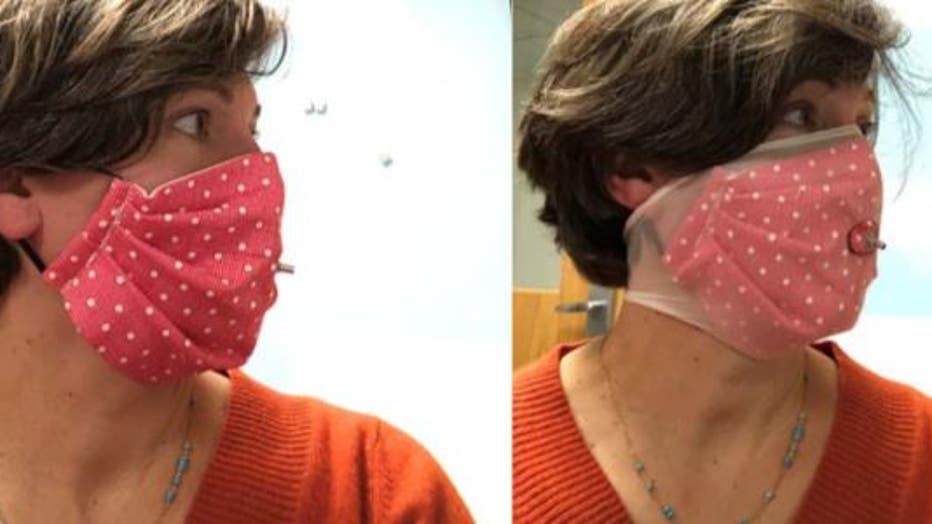Adding an extra layer of nylon pantyhose to a DIY face mask improves protection, researchers say
How to make your own face mask at home (no sewing required)
The CDC offers steps on how to make your own cloth face covering, regardless of whether or not you know how to sew.
LOS ANGELES - Nationwide shortages of key medical supplies amid the COVID-19 pandemic have forced millions of citizens to fashion protective equipment to keep themselves safe during the widespread outbreak.
RELATED: How to make your own face mask at home — even if you don’t know how to sew
People are finding clever ways to use whatever materials they can find at their homes to produce face masks.
While a cotton bandana may not work the same as an N95 mask in blocking the transmission of the virus, something is better than nothing, according to the CDC.

The addition of a nylon stocking to a face mask photographed by researchers. (Northeastern University)
But health experts say the material still matters, and for those lacking items necessary for producing surgical-grade masks, a study conducted by researchers at Northeastern University found that adding an outer layer of nylon stocking over masks “improved particle filtration efficiency for all masks.”
After adding the nylon material to the homemade masks, which researchers say achieved particle blockage of less than 60 percent without the additional layer, the efficiency of the masks was improved by as much as 50 percent.
RELATED: CoronavirusNOW.com, FOX launches national hub for COVID-19 news and updates
According to the study, 10 homemade face masks of different designs were tested for the percentage of particle removal against a 3M model 1836 surgical mask, which was used as a baseline for comparison with the homemade masks.
Researchers added that the standard 3M model surgical masks are known to have an efficiency of 75 percent when blocking out unwanted particles.
For anyone interested in DIY face masks, materials matter
According to researchers, the best design was that of a double-layer mask made of heavyweight “quilter’s cotton,” consisting of a thread count of 180 or more.
Adding the nylon stocking overlay “brought the particle filtration efficiency for five of the 10 fabric masks above the 3M surgical mask baseline,” according to the study.
"It really improved the performance of all of the masks, and it brought several of them up and over the baseline mask we were using, which was a 3M surgical-type mask," Loretta Fernandez, a key author in the study, told NPR.
RELATED: Can’t find hand sanitizer? The World Health Organization has a recipe to make your own
Fernandez recommended using a Q-sized pair of nylon pantyhose to make breathing easier.
As people rush to produce face masks following the recommendations from health experts and authorities to wear masks in public because of the coronavirus pandemic, researchers have sought to find the efficacy in the face coverings made from locally sourced fabrics.
Researchers at the Wake Forest Baptist Medical Center evaluated approximately 400 masks made by community volunteers in order to find which, if any, masks worked as well as N95 respirators or any other medical-grade surgical masks.
RELATED: Asymptomatic individuals may be rapidly spreading COVID-19, according to researchers
“We saw the possibility that we could face a shortage of surgical masks in the hospital and wanted to investigate the possibility of using cloth masks as an alternative as long as they worked and provided good protection for our doctors, nurses and patients,” said Scott Segal, M.D., chair of anesthesiology at Wake Forest Baptist, who conceived of the idea.
While the best mask achieved up to 79 percent filtration, some produced as little as 1 percent.
According to researchers, the best design was that of a double-layer mask made of heavyweight “quilter’s cotton,” consisting of a thread count of 180 or more.
The inferior masks consisted of single-layer or double-layer designs made of lightweight cotton.
“As important as this information is for hospitals, it is also important for people who want to make masks for their own use,” Segal said. “We don’t want people to think that just any piece of cloth is good enough and have a false sense of security.”

